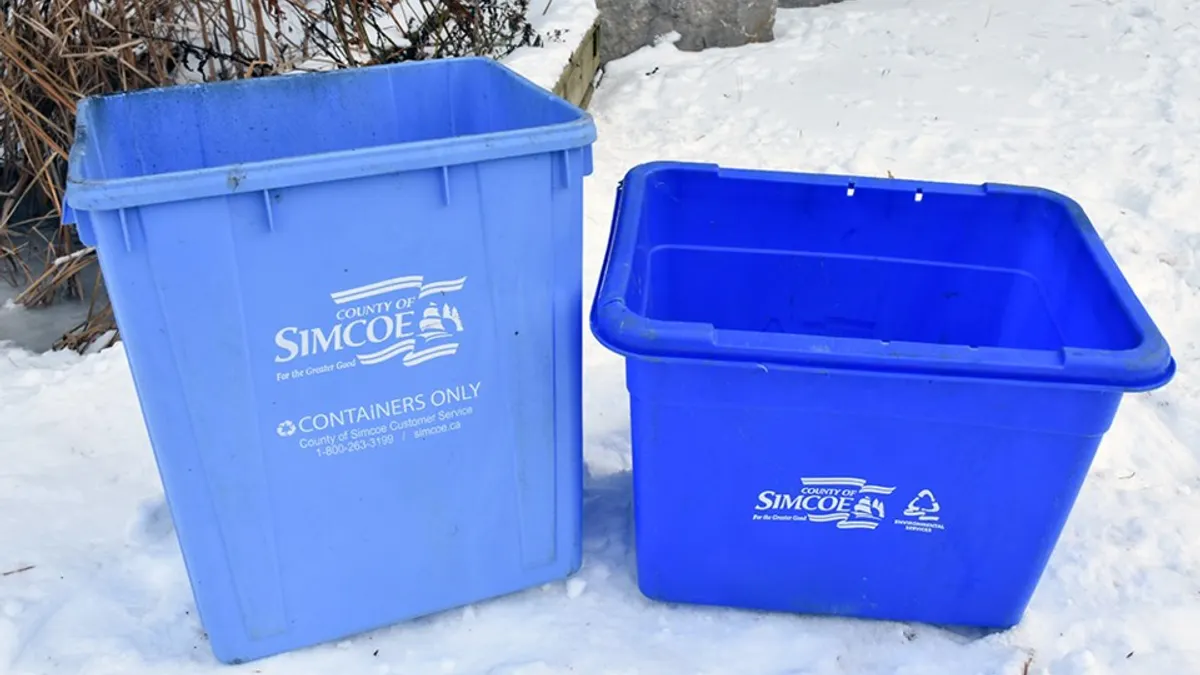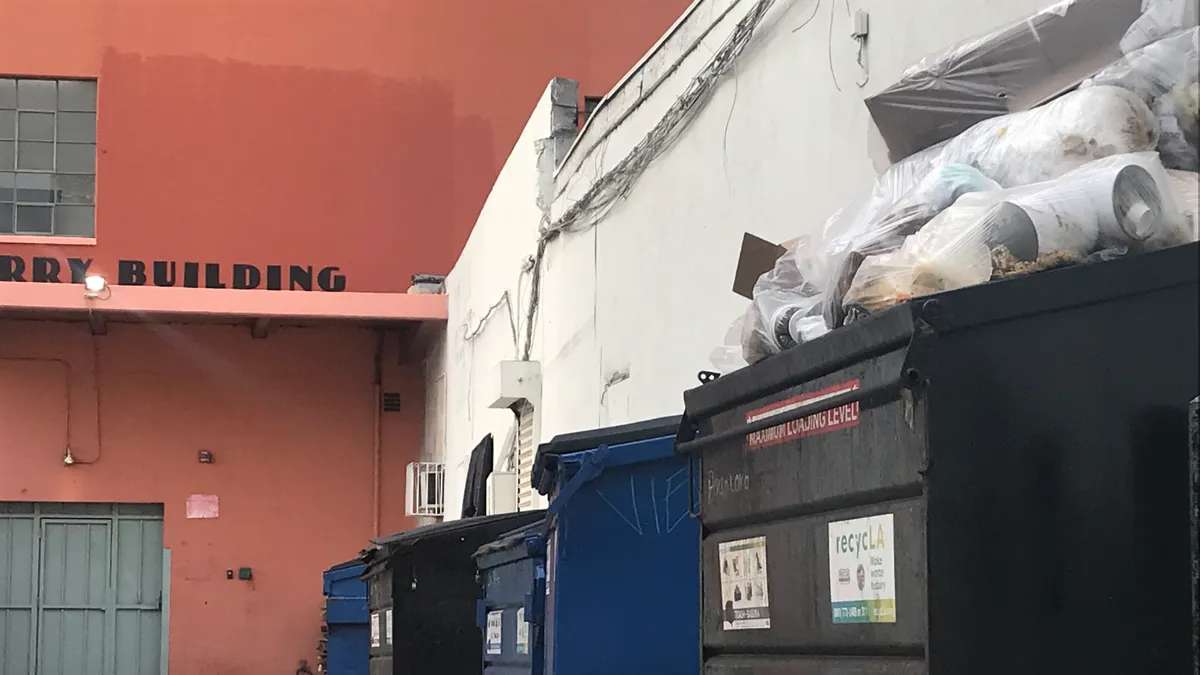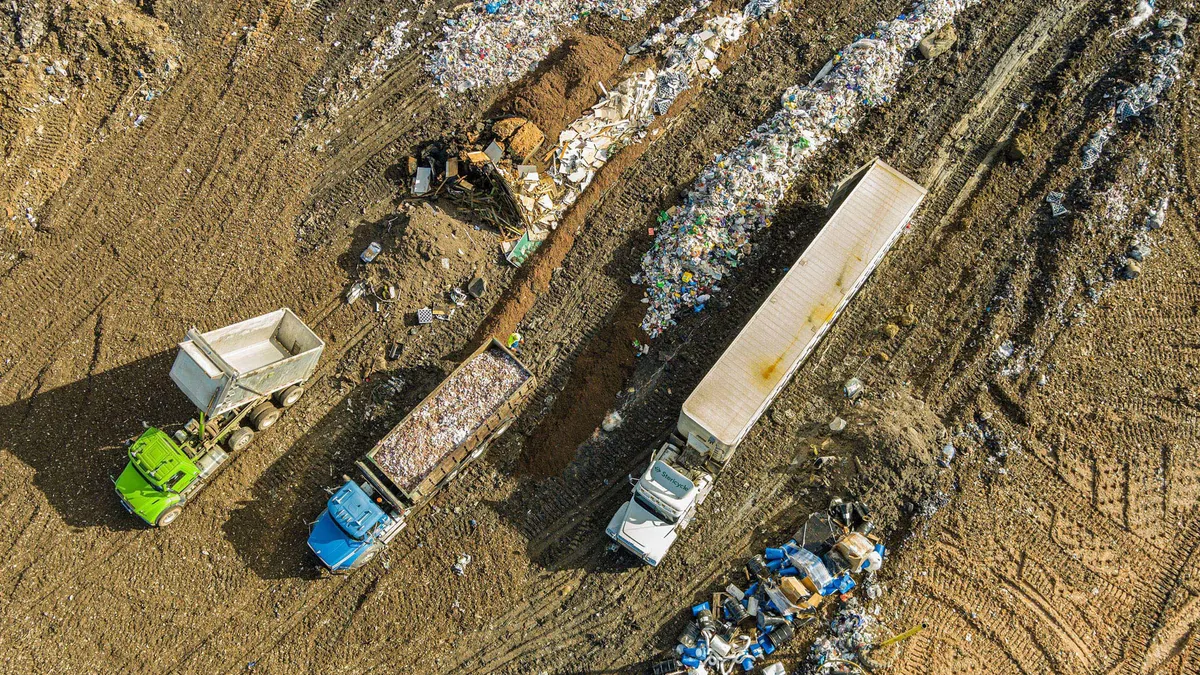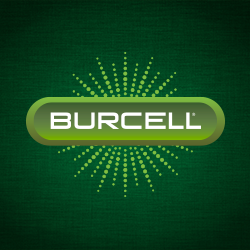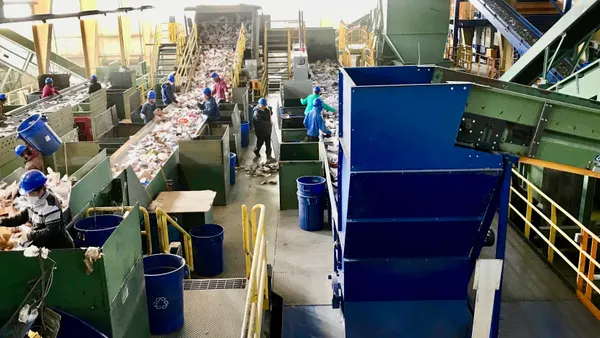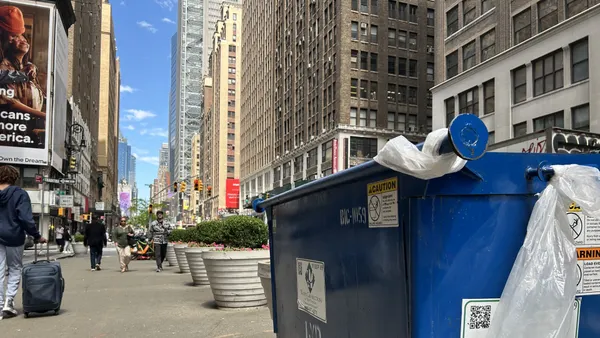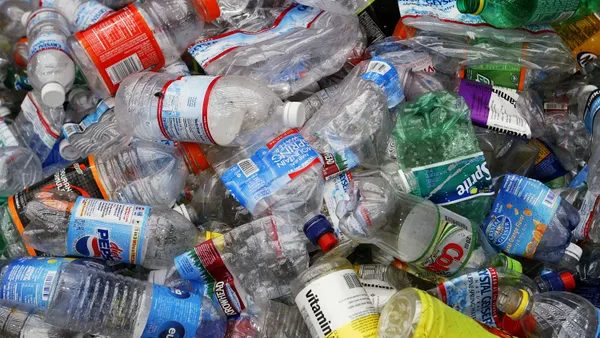Dive Brief:
- Ontario recently updated regulations for its updated Blue Box program, the province’s extended producer responsibility program for packaging that will roll out in a new form in 2026.
- Finalized regulations set specific recovery targets for materials like paper, glass, rigid plastic and metal. The regulations also call for phasing in recovery targets for flexible plastics, starting at 10% in 2026, increasing to 15% in 2028, and reaching 25% in 2032 and beyond.
- Waste groups, including GFL Environmental and the Association of Plastic Recyclers, submitted comments on the regulations that applauded some of the final provisions. Yet they worry about a provision that delays enforcement on certain recycling standards until 2028, a move they said could throw recycling infrastructure investments off track and encourage landfilling in the meantime.
Dive Insight:
Ontario is getting closer to its Jan. 1, 2026 deadline for transitioning the management of its Blue Box program. The change will make packaging producers fully responsible for collecting and recycling materials, as opposed to the previous model where municipalities split costs and responsibilities with the producers.
The new regulations will affect how MRF operators and haulers do business in the province and will require processors to meet higher recovery standards for an expanded list of recycled materials. Some haulers are already coordinating with Circular Materials, a Blue Box producer responsibility organization, to sort out how it will meet the new regulations.
The government’s finalized amendments to the Blue Box Regulation are meant to strike a balance between ensuring “the long-term sustainability and affordability of the Blue Box system while maintaining access to recycling services for residents,” said the Ontario Ministry of the Environment, Conservation and Parks.
The regulations set 2026-2027 recovery rates of 80% for paper, 50% for rigid plastic, 75% for glass, 67% for metal and 75% for beverage containers. Those rates will increase over time through 2032, but an earlier draft had called for some of those rates to increase more quickly over that time period.
The final regulations call for producers to use their “best efforts” to comply with the program’s targets during 2026 and 2027, with enforcement not kicking in until 2028.
GFL Environmental had “strongly urged” the ministry to begin enforcement on recovery rates in 2026. GFL has been preparing for the new Blue Box rollout by making “significant capital investments in fleet, facilities, and technology,” said Nicole Willett, GFL’s VP of operations for EPR, in comments to the Environmental Registry of Ontario.
Delayed enforcement strategies could lead to increased landfilling instead of those materials flowing through recycling facilities, she said. GFL collects and processes residential recycling in numerous large municipalities in Ontario.
“While we understand the need to consider modest short-term adjustments, continued reliance on a ‘best efforts’ approach undermines accountability, weakens investment confidence, and disrupts competitive balance,” she wrote.
Recyclers in other provinces also weighed in. In written comments, the Recycling Council of Alberta criticized the proposal to delay enforcement for certain recovery targets, saying the proposal allows producers to “become adept at achieving the status quo at the least cost and for as long as possible. If the aim is to achieve a circular economy, with improved environmental results, then Ontario needs to achieve more than the status quo and sooner,” the group wrote.
The province’s final regulations also deferred collection programs in multi-residential buildings, schools and long-term care homes until 2031.
APR acknowledged that phasing in the expansion for multi-family housing “will allow time to improve collection services in multi-residential buildings not currently under municipal programs,” but urged program operators to add these services as soon as possible so residents have equal access to services.
Both APR and GFL say they support other updates to the final regulations, including the proposed phased in recovery targets for flexible plastics.
APR had pressed for higher recovery rate targets, but noted that a phased in approach nonetheless recognizes the materials’ “technical and operational challenges” for recycling.
GFL supported the idea of phased in recovery targets, saying that investments in the province are already underway to deploy technology that can recycle both plastic film and multi-layer flexible packaging. “A measured approach will support long-term system success,” GFL wrote.
An earlier version of the regulations would have also required producers to expand efforts to collect recycling in public spaces, as well as provide collection of “away from home” beverage containers. Those elements were removed from the final draft, a move both APR and GFL supported.
APR agreed that “there is no cost-effective ‘away from home’ collection system available,” but the association suggested that the provincial government could instead work with private haulers “to support collection in locations where there are significant volumes” and allow producers to count those volumes toward their required recovery targets.
Now that regulations are set, recyclers and haulers are awaiting other pieces of the program to fall into place. Circular Materials, the PRO for Ontario, announced it will launch its unified material list for recycled materials in 2026.
In September, the PRO announced that list would include an expanded collection of materials including toothpaste tubes, deodorant, ice cream tubs, frozen juice containers, black plastic containers and coffee cups. Circular Materials says the coffee cups were added after a successful pilot program for recycling polycoated paperboard from coffee cups.
This story first appeared in the Waste Dive: Recycling newsletter. Sign up for the weekly emails here.


